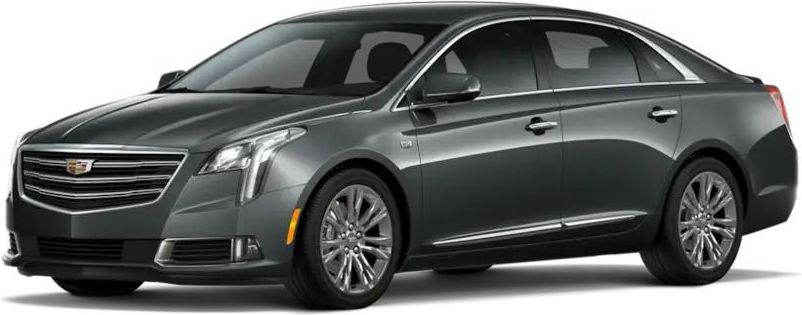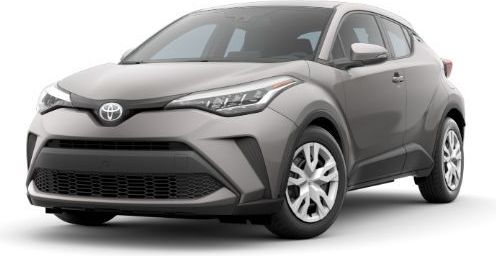
Modern car safety features play a crucial role in protecting drivers and passengers, but with so many options available, it can be difficult to know which ones matter most. Understanding technologies like advanced driver-assistance systems (ADAS), including lane-keeping assist, and passive features such as airbags and seat belts helps make a smart buying decision.
This article explains everything you need to compare modern car safety features, including passive and active systems, ADAS technologies, and what to look for when evaluating safety ratings. Throughout the article, we discuss crash test scores, real-world performance, and the cost vs. benefit of advanced safety technologies.
Knowing which safety features best suit your driving needs can help prevent costly accidents—or guide you in cases where consulting a car accident lawyer might be necessary. Continue reading to discover how modern car safety features compare to each other and protect you on the road.
Types of Car Safety Features
Modern cars come equipped with safety features designed to either prevent accidents or protect occupants when collisions occur. These car safety features fall into two main categories: passive safety features and active safety features, each serving a distinct purpose in keeping drivers and passengers safe on the road.
Passive Safety Features
Passive safety features minimize injuries during a motor vehicle accident by absorbing impact forces and protecting the car’s occupants. Common examples include seat belts, airbags, and crumple zones—all of which have proven to reduce fatalities and serious injuries in crashes.
Since passive features activate automatically during a collision, they serve as a last line of defense when other systems fail to prevent a car accident.
Active Safety Features
Active safety features help prevent car accidents by enhancing driver awareness and improving vehicle control in potentially dangerous situations. Technologies like anti-lock braking systems (ABS), electronic stability control (ESC), and forward collision warning work to avoid collisions before they occur.
These systems rely on sensors and real-time data to assist drivers, making active features essential for accident prevention in modern vehicles.
Advanced Driver-Assistance Systems (ADAS)
Advanced driver-assistance systems use cutting-edge technology to improve driver control and reduce the likelihood of motor vehicle collisions. These features are rapidly becoming standard in modern vehicles, offering a safer and more comfortable driving experience by addressing common road hazards in real-time.
Key ADAS Technologies
ADAS technologies help drivers avoid accidents by detecting hazards and either warning the driver or taking automated action. Below are key ADAS features commonly found in modern vehicles:
- Automatic Emergency Braking (AEB): Applies brakes automatically when it detects an imminent collision, helping to prevent or reduce the impact of a crash.
- Lane Departure Warning: Alerts the driver when the vehicle drifts out of its lane without signaling, reducing the risk of side-swipe accidents.
- Adaptive Cruise Control: Maintains a safe following distance by adjusting the vehicle’s speed based on traffic conditions.
- Blind-Spot Monitoring: Detects vehicles in adjacent lanes and provides a warning when it's unsafe to change lanes.
- Rear Cross-Traffic Alert: Monitors for approaching traffic when reversing out of a parking space or driveway, helping to prevent collisions.
- Parking Assist: Uses sensors and cameras to guide drivers during parking maneuvers or even park the vehicle automatically.
How ADAS Enhances Safety
ADAS enhances safety by addressing one of the primary causes of accidents: human error. Studies show that technologies like forward collision warning and automatic emergency braking can reduce crash rates by nearly 49% and injury risks by 53%. Systems like blind-spot monitoring and rear cross-traffic alert are especially valuable in situations with limited visibility, such as highway lane changes or backing out of tight parking spaces.
By offering real-time alerts and automatic intervention, ADAS minimizes the likelihood of common accidents like rear-end collisions, side swipes, and parking lot mishaps. These technologies reduce the frequency of crashes and help mitigate the severity of injuries when an accident is unavoidable, making them a key factor in modern vehicle safety advancements.
Evaluating Car Safety Features
Comparing car safety features requires understanding how well they perform under real-world conditions. Below are factors to consider when evaluating vehicle safety to ensure you’re making an informed decision.
Crash Test Ratings and What They Mean
Crash test ratings provide a standardized way to assess how well a vehicle protects its occupants during collisions. Organizations like the National Highway Traffic Safety Administration (NHTSA) and the Insurance Institute for Highway Safety (IIHS) conduct tests that evaluate crashworthiness and safety feature effectiveness.
Pay attention to these ratings, especially for frontal and side-impact tests, as they can indicate how a vehicle might perform in common car accident scenarios.
Safety Ratings vs. Real-World Performance
While crash test ratings are valuable, they don’t always reflect real-world driving conditions. Some safety features, like advanced driver-assistance systems, may perform better or worse depending on weather, road type, and driver behavior.
Look for owner reviews, reliability reports, and data from studies like the one conducted by the PARTS initiative, which showed significant reductions in crashes due to ADAS technologies.
Cost vs. Benefit of Safety Features
Advanced safety features often add to the overall price of a vehicle, but they can provide long-term value by lowering the risk of accidents and reducing insurance costs. When weighing cost against benefit, consider which features are essential based on your driving habits and environment.
For example, automatic emergency braking and lane departure warnings may be worth the investment for highway commuters, while parking assistance may benefit urban drivers navigating tight spaces.
Maintaining Safety Features
Proper maintenance of car safety features ensures they function correctly when you need them most. While many systems are made to work automatically, they require regular upkeep to stay reliable. Here are key ways to maintain your vehicle’s safety features:
- Keep sensors and cameras clean: Dirt, debris, or snow can block sensors for systems like automatic emergency braking and lane-keeping assist, reducing their effectiveness.
- Check tire pressure and tread regularly: Systems like electronic stability control (ESC) and anti-lock brakes (ABS) rely on proper tire performance for optimal functionality.
- Ensure software updates are installed: Many modern vehicles receive software updates for advanced driver-assistance systems (ADAS) via over-the-air (OTA) services. These updates improve system accuracy and can fix known issues.
- Inspect brakes and lights routinely: Malfunctioning brake lights can prevent adaptive cruise control from functioning properly, and worn brake pads can reduce the effectiveness of ABS.
- Replace worn windshield wipers: Features like forward collision warning and lane departure warning depend on clear visibility, so keeping your windshield wipers in good condition is essential.
Additional Considerations When Buying a Car
When shopping for a new car, safety features are a top priority, but it’s important to consider factors in addition to the list of available technologies. Vehicle size, driving environment, and manufacturer differences can all influence how safety features perform and how much value they offer.
Safety Ratings by Class and Size of Vehicle
Safety ratings can vary based on a vehicle’s class and size. Larger vehicles like SUVs and trucks tend to fare better in crashes due to their weight and structure, but they may be more prone to rollovers.
Small cars may offer excellent crash test ratings within their category, but they may not provide the same level of protection in collisions with larger vehicles. When comparing safety ratings, always account for the type of vehicle and how it matches your needs.
How to Prioritize Safety Features Based on Driving Conditions
The value of specific safety features depends on where and how you drive. For frequent highway drivers, features like adaptive cruise control and lane-keeping assist offer significant benefits by reducing fatigue and helping maintain safe distances.
In contrast, city drivers might prioritize features like rear cross-traffic alerts and parking assistance to navigate tight spaces and busy streets more safely.
Comparing Safety Features Across Different Brands
Not all safety features are created equal—different automakers implement the same technologies with varying levels of effectiveness. For example, one brand’s adaptive cruise control may offer smoother operation and better responsiveness than another’s.
When comparing safety features across brands, look for reviews, user feedback, and professional evaluations to see how well those systems perform in real-world conditions.
Future of Car Safety Features
The future of car safety is heading toward increased automation, smarter systems, and enhanced connectivity. Many automakers are working on advancing current ADAS technologies into fully autonomous driving systems, with features like highway autopilot and hands-free driving already in the early stages.
Additionally, emerging innovations such as vehicle-to-everything (V2X) communication will allow cars to exchange information with other vehicles, infrastructure, and even pedestrians, reducing accidents by improving situational awareness.
As safety technology evolves, we can expect new federal regulations requiring advanced systems like automatic emergency braking and lane departure warning in all new vehicles, making roads safer for everyone.
Conclusion
Modern car safety features offer drivers more protection than ever before, from essential passive systems like airbags to advanced ADAS technologies that help prevent accidents. Evaluating these features means understanding how crash test ratings, real-world performance, and costs impact safety.
By maintaining your car’s safety features and factors like vehicle size, driving conditions, and brand differences, you can make smarter decisions when buying your next vehicle. As technology continues to evolve, staying informed about the latest safety innovations will help ensure you’re always choosing the best options for your safety on the road.
Pat Baker enjoys cars, hates driving, and writes for car accident lawyers in the Philadelphia area.




